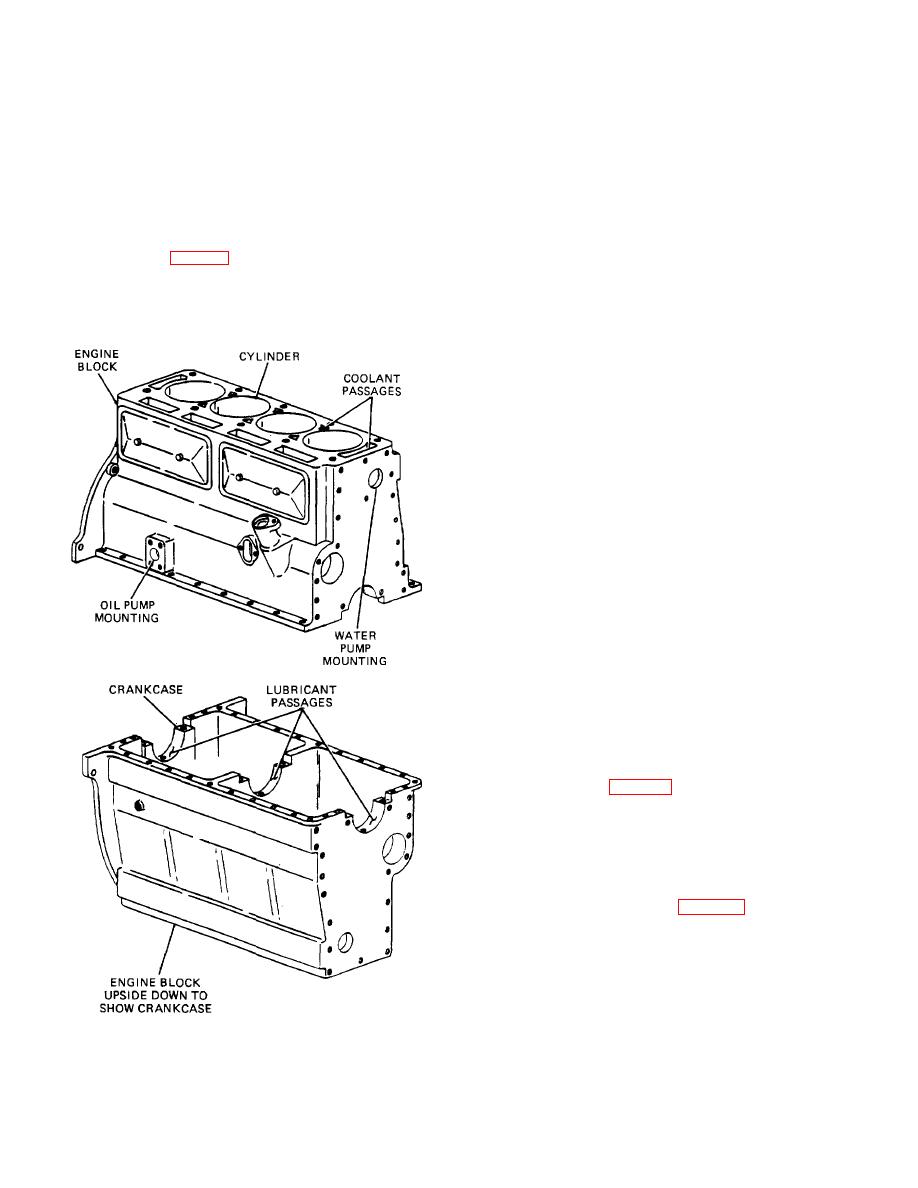
| Tweet |

Custom Search
|
|

|
||
 TM 9-8000
CHAPTER 3
CONVENTIONAL ENGINE CONSTRUCTION
Section I.
CYLINDER BLOCKS, HEADS, AND CRANKCASES
contains the crankcase, cylinders, coolant pas-
3-1.
Cylinder Blocks - Liquid-Cooled Engines.
sages, and, in the case of flathead engines, the
valve seats, ports, and guides.
a. General (Fig. 3-1). The cylinder, or the
engine block, is the basic foundation of virtually
b. Construction. The cylinder block is a one-
all liquid-cooled engines. The block is a solid
piece casting that is usually an iron alloy con-
casting made of cast iron or aluminum that
taining nickel and molybdenum. This is the best
overall material for cylinder blocks. It provides
excellent wearing qualities, low material and
production costs, and it only changes dimensions
minimally when heated. Another material that is
used for cylinder blocks, although not exten-
sively, is aluminum. Aluminum is used whenever
weight is a consideration. It is not as practical to
use for the following reasons:
(1)
Aluminum is more expensive than cast
iron.
(2)
Aluminum is not as strong as cast iron.
(3) Due to the softness of aluminum, it
cannot be used on any surface of the block that is
subject to wear. This necessitates the pressing,
or casting, of steel sleeves into the cylinder
bores. Threaded holes must be deeper, which
introduces extra design considerations. All of
these things increase production costs.
(4) Aluminum has a much higher expansion
rate than iron when heated. This creates prob-
lems with maintaining tolerances.
c. Cylinders (Fig. 3-2). The cylinders are
bored right into the block. A good cylinder must be
round, not varying in diameter by more than
approximately 0.0005 in. (0.012 mm). The
diameter of the cylinder also must be uniform for
its entire length.
d. Cylinder Sleeves (Fig. 3-3). Cylinder
sleeves or liners commonly are used to provide a
wearing surface other than the cylinder block for
the pistons to ride against. This is important for
the following reasons:
(1) Alloys of steel can be used that will wear
longer than the surfaces of the cylinder block.
TA233351
Figure 3-1. Liquid Cooled Cylinder Block.
3-1
|
||
 |
||